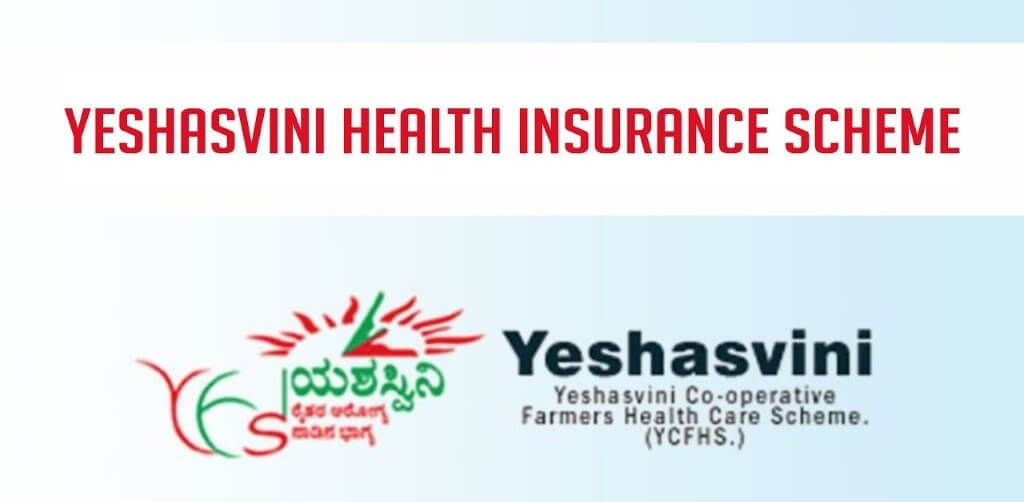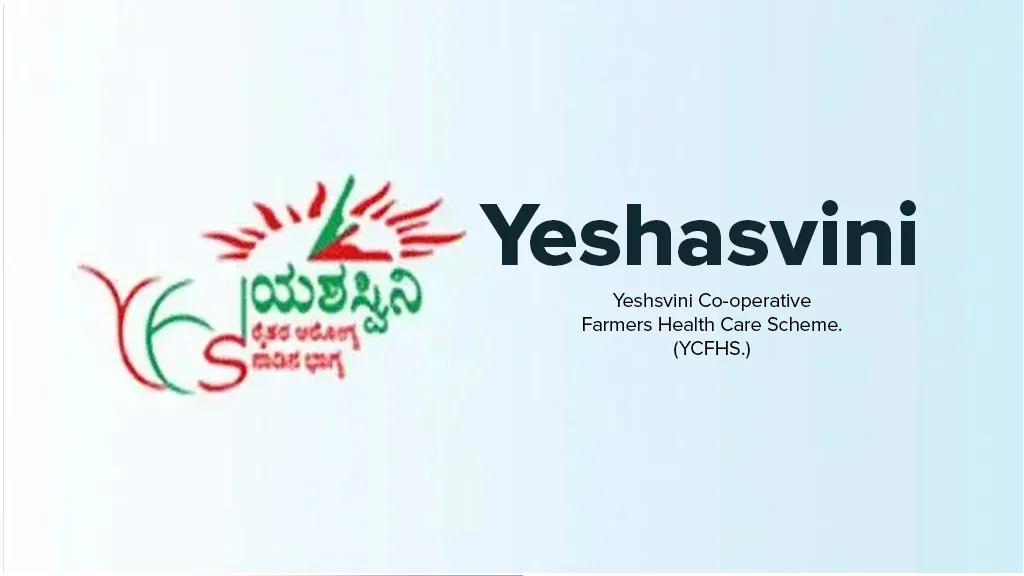
The Yeshasvini Health Insurance Scheme is a government-sponsored health insurance scheme in Karnataka, specifically targeting cooperative society members and their families. It’s designed to provide access to hospitalisation, surgical, and medical treatments at a reduced cost or on a cashless basis through empanelled hospitals.
Eligibility Criteria For Yeshasvini Health Insurance Scheme:
Table of Contents
To enrol in the Yeshasvini Health Insurance Scheme, one must satisfy certain conditions. Below is a summary of the eligibility criteria and restrictions as per the scheme guidelines and published sources.
Membership in a Cooperative Society:
The primary applicant must be a member of a cooperative society registered under the relevant Acts (Karnataka Cooperative Societies Act, Souhardha Sahakari Act, or Multi‑State Cooperative Societies Act). The membership should be for at least 3 months before enrollment.
Residence / Location:
The Yeshasvini Health Insurance Scheme mandates that the primary applicant should be a resident in Karnataka and often in rural areas (i.e., outside “Cities and Corporations”). Some sources mention that urban membership has a higher premium or different slabs.
Age Limit:
Many sources state that the applicant should be up to 75 years old to apply. However, in the 2022 guidelines, some mention “no cap on age” for beneficiaries in the relaunched scheme.
Family Coverage:
Once the primary member is entitled, spouse, children, parents, and other dependents of the family are eligible to be included under the Yeshasvini Health Insurance Scheme, even if they themselves are not members of a cooperative society.
Who is not eligible/exceptions?
- Members of cooperative societies that are defunct, liquidated, or dissolved are not eligible.
- Married daughters living outside the jurisdiction or who are not society members may not be covered.
- Employees of government or private companies drawing a salary may be excluded in some interpretations.
- Some sources mention that cooperative society employees may be ineligible.
- Also, the Yeshasvini Health Insurance Scheme may not cover certain areas (e.g., inside city corporation limits) or urban regions under certain categories.
Because versions and rules change, always check with your local cooperative society or the scheme’s official notification for your district.
Documents Required For Yeshasvini Health Insurance Scheme:
When applying, you will typically need to submit photocopies (and sometimes originals for verification) of:
- Proof of identity (e.g., Aadhaar card, voter ID, etc.)
- Proof of age (e.g., birth certificate, school certificate, Aadhaar)
- Proof of address (e.g, ration card, utility bills, Aadhaar)
- Certificate or proof of membership in the cooperative society (membership card, membership certificate, society membership number)
- Details of family members (name, age, relation, identification)
- Sometimes caste certificate for SC/ST beneficiaries (if claiming subsidies)
- Passport-sized photographs of the applicant and family members
These are the common documents listed in multiple sources.
How to Apply For Yeshasvini Health Insurance Scheme:
Yeshasvini Health Insurance Scheme is not an “open all year” scheme. There is a defined enrolment or renewal period each year, during which applications are accepted through cooperative societies. Outside that window, one may not be able to join until the next cycle.
Enrollment Period:
- In many references, the enrolment/renewal window is from May to June each year.
- Some sources mention July to October as the enrollment window.
- According to the 2022 government notification, registration begins on November 1, and the scheme becomes operational from January 1 of the subsequent year.
Hence, check the schedule for your district or cooperative society for that year.
Where to Apply:
The Yeshasvini Health Insurance Scheme is handled through cooperative societies / cooperative banks/self-help groups/society offices. You approach the society of which you are a member.
They will provide you with the UHID (Unique Health Identification) enrolment form or the Yeshasvini Health Insurance Scheme enrollment form.
You fill in details (applicant, family, age, address, membership, etc.) and submit it along with the documents and the premium (or contribution) as applicable.
Once processed, the society issues you the Yeshasvini Health Card / UHID card, which you use to access benefits.
In some sources, there is mention of an online component or application via the official website, but the core enrollment is often offline via a cooperative society.
Premium Of Yeshasvini Health Insurance Scheme:
To be covered, beneficiaries need to pay a fixed contribution/premium (member fee). Some key points:
- For the rural Yeshasvini Health Insurance Scheme, historically the premium has been around ₹500 for a family of four, and ₹100 for each additional member.
- For urban Yeshasvini Health Insurance Scheme, the premium is higher: e.g., ₹1,000 for a family of four, and ₹200 per extra member.
- In some schemes, SC/ST individuals get government subsidy or full premium support (i.e., they may pay reduced or zero premium).
- Some sources mention rural premium as ₹300 and urban as ₹710 for certain versions.
The correct premium for your area and year will be decided by the Karnataka Department of Cooperation/society.
How to Avail or Claim Yeshasvini Health Insurance Scheme:
Once you are enrolled and have the Yeshasvini Health Card (or UHID), here’s the typical process to use the Yeshasvini Health Insurance Scheme benefits:
Identify a Network (Empanelled) Hospital:
The Yeshasvini Health Insurance Scheme works through a network of hospitals across Karnataka where treatment under Yeshasvini Health Insurance Scheme is accepted. You must go to one of these hospitals to use the scheme.
Verification and Pre‑diagnosis:
At the hospital, a medical coordinating officer (or designated official) verifies your Yeshasvini card / UHID and membership status.
If diagnostic tests are needed, those may be performed.
Pre‑authorization Request:
If a surgery or procedure is required, the hospital (or TPA/MSP) submits a pre‑authorisation request to the scheme’s Management Services Provider (MSP). This includes details of the proposed treatment, cost estimates, medical reports, etc.
The MSP is supposed to review and approve (or reject) the request—often within 24 hours—to avoid delay in treatment.
Cashless Treatment:
Once authorization is granted, you receive treatment cashless, i.e., you typically do not pay upfront for covered services (within scheme limits). The hospital claims the cost from the Yeshasvini Health Insurance Scheme.
Post‑Treatment Claim Settlement:
After discharge, the hospital submits the final bills, discharge summary, medical records, etc., to the MSP / scheme trust. The scheme settles payment to the hospital within a stipulated period (often cited as 45 days) after verifying documentation.
Out‑of‑Pocket for Uncovered Items:
If your treatment includes items, procedures, or costs not covered by the Yeshasvini Health Insurance Scheme(or above scheme limits), you may have to pay those parts yourself.

Coverage and Benefits Of Yeshasvini Health Insurance Scheme:
What the Scheme Covers
While the exact list of treatments may vary or evolve, Yeshasvini is said to cover:
- A wide range of surgical and medical procedures (over 1,650 diseases) in network hospitals.
- Inpatient hospitalisation, operation theater charges, medicines, anesthesia, nursing, bed charges, consultation, etc.
- Emergency treatments (some sources mention snake bites, drowning, etc.)
- Specialized surgeries (e.g. vascular surgery, oncology, pediatric, etc) under network hospitals.
What the Scheme Does Not Cover:
Yeshasvini has several exclusions. These are treatments or costs that the scheme typically does not pay for:
- Cosmetic surgeries (except injury), implants, prostheses, skin grafting, etc.
- Organ transplants (kidney, heart, etc.)
- Dialysis and related chronic kidney treatments
- Chemotherapy for cancer (i.e. drug therapy) in many described, though surgery for cancer might be included)
- Follow-up treatments after discharge in many cases
- Road accidents and trauma (in many descriptions)
- Diagnostic investigations in some contexts (though in some versions, the scheme includes diagnostic tests)
- Joint replacement surgeries are often excluded
Because the scheme details change, check the official list of covered procedures for the year and district.
How to Apply For Yeshasvini Health Insurance Scheme:
Here’s a consolidated, stepwise procedure you can follow to enroll in the Yeshasvini scheme:
- Check your eligibility (cooperative membership, duration, residence, age)
- Collect necessary documents (ID, age proof, address, cooperative membership proof, family details)
- Visit your cooperative society / cooperative bank/society office
- Obtain the enrollment (UHID) form from the society
- Fill in the details for yourself and your family members
- Submit the completed form along with documents and the premium/contribution
- Wait for processing by the society/department
- Receive the Yeshasvini Health Card / UHID card
- During hospitalisation, present the card at a network hospital, get pre-authorization if needed, and receive treatment
- Post-treatment, ensure the hospital submits the claim and the scheme settles the bills
FAQs:
Q. When can I enroll or renew Yeshasvini?
A. Enrollment and renewal are typically permitted during a specific period each year (often May–June). Some scheme versions mention July–October or starting in November for registration.
Q. What is the premium/contribution I must pay?
A. It depends on whether you are in a rural or an urban area. For example, rural families of four might pay ~₹500, and urban families ~₹1,000, with additional charges for extra members. SC/ST families may get subsidies. Always check the official rates for your district/year.
Q. Is there an upper age limit?
A. Many sources say 75 years is the cutoff to enroll. However, the re‑notification in 2022 mentions no age cap for beneficiaries.
Q. Do all family members need to be cooperative society members?
A. No. Only the main applicant needs to be a cooperative society member. All family members (spouse, children, parents, dependents) can be covered under the scheme even if they are not society members themselves.
Q. How many treatments or procedures are covered?
A. The scheme covers a broad range of surgical and medical conditions—some descriptions say over 1,650 treatments.
Q. Where can I use the card/scheme?
A. At empanelled (network) hospitals across Karnataka. You must go to one of those hospitals to avail of cashless treatment.
Q. What is the process for getting treatment under the scheme?
A. You go to a network hospital, and the hospital verifies your card. If the required procedure needs preauthorization, it sends a request to MSP, the scheme approves, then you receive treatment cashless, and after discharge hospital sends settlement claims.
Q. Are there any waiting periods before benefits can be used?
A. Some sources mention a waiting period of about 15 days after enrollment before you can use the benefits.
Q. Can I claim under both Ayushman Bharat / AB‑Ark and Yeshasvini for the same treatment?
A. No. As per recent government circulars, Yeshasvini beneficiaries cannot claim under the Ayushman Bharat–Arogya Karnataka scheme for the same treatment. This is to avoid duplication of benefits.
Q. What happens if I go to a hospital that is not in the network?
A. The scheme typically covers only empanelled hospitals. Treatment in non‑network hospitals may not be eligible for caa shless facility, and you might have to pay out-of-pocket or request reimbursement if allowed under the scheme rules (if at all).
Q. How long does the scheme take to settle hospital bills/claims?
A. The hospital is supposed to receive a settlement (payment) from the scheme post verification, often within 45 days of claim submission.
Q. Can I join the scheme mid‑year?
A. Usually not. Enrollment is restricted to certain months of the year. If you miss the window, you may have to wait until the next cycle.